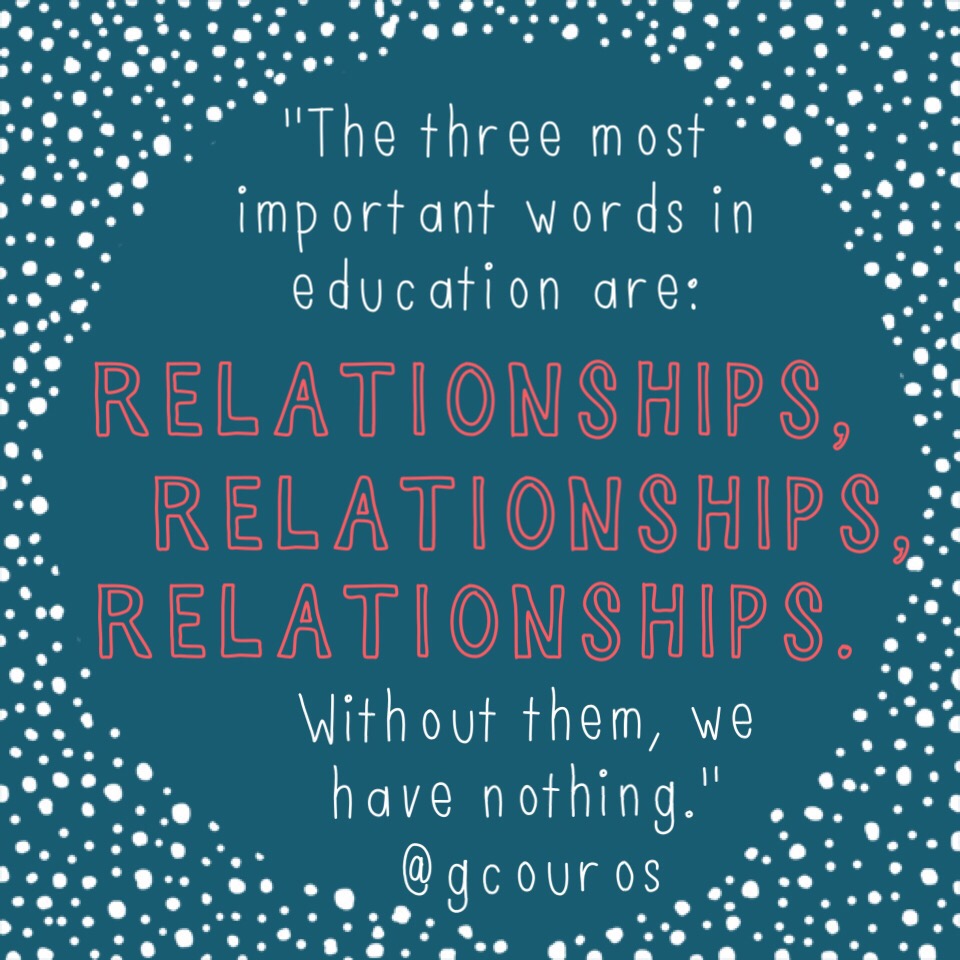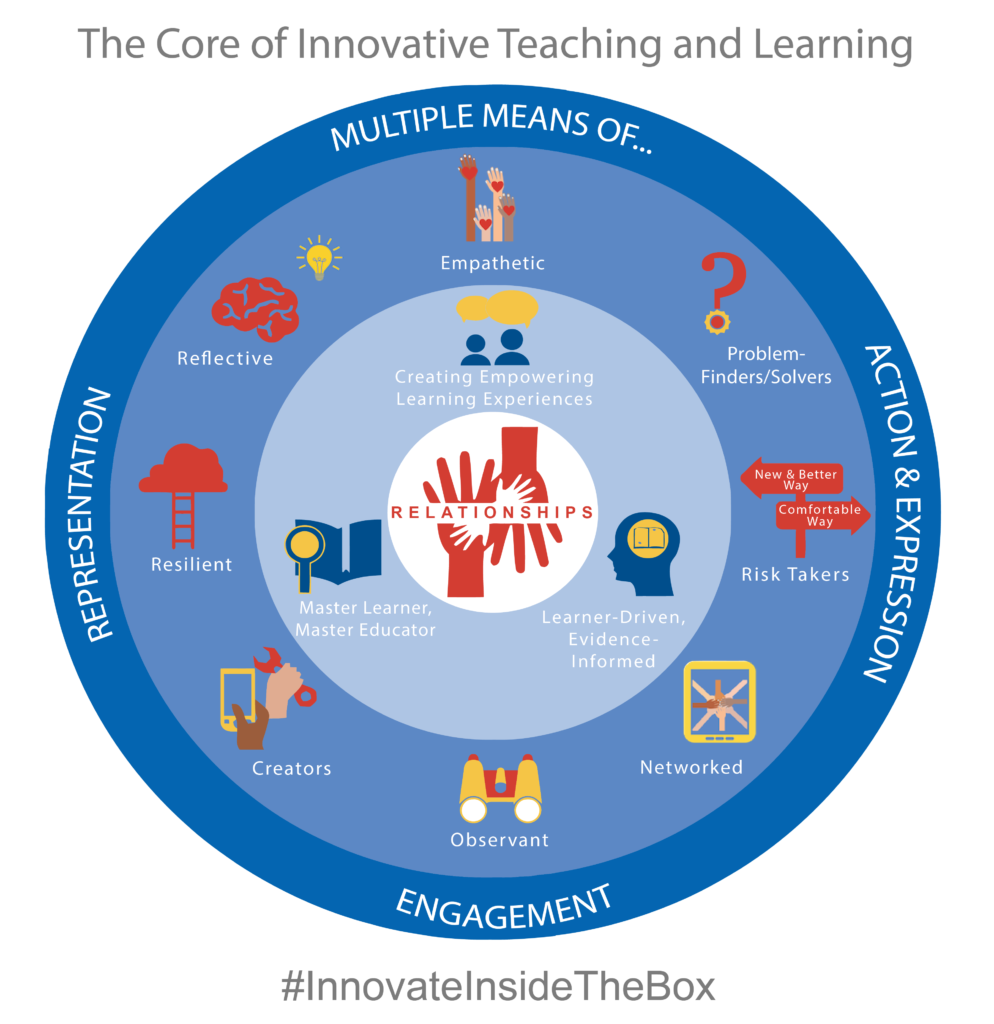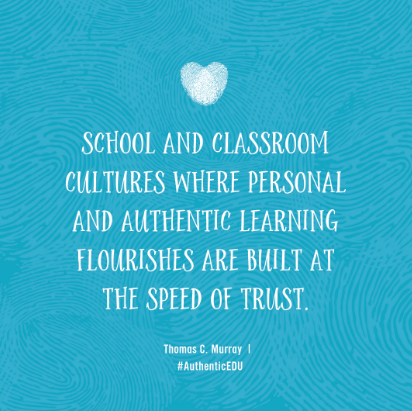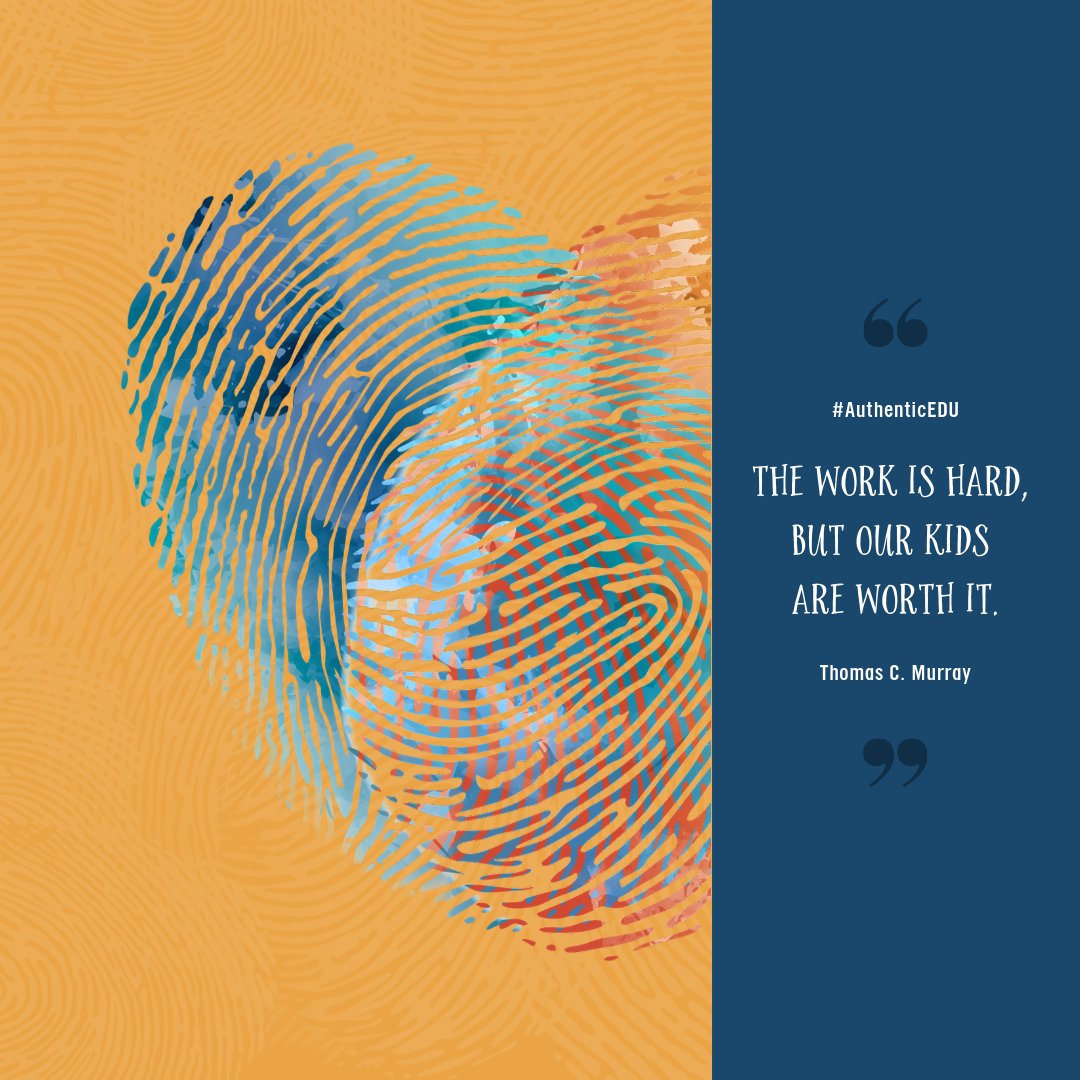The Necessity of Authenticity
Relationship might be my most used tag in my blogs, and it’s obvious why. 
I love how the quote above from The Innovator’s Mindset written by George Couros was represented visually in his latest book with Katie Novak, Innovate Inside the Box.

It all starts with relationships, and as Tom Murray says in his new book Personal and Authentic, trust is a huge part of those relationships.
“It is through trust that we can build relationships—the foundation of personal and authentic learning cultures. It’s no secret that students learn from people they love. This love comes from a sense of safety, security, and knowing one is cared for in the process. It is trust that stabilizes and solidifies these in our daily interactions.”
But he goes on to say that trust isn’t just about others, but starts with first trusting ourselves.
“Before trust can become an unwavering thread of classroom culture, educators must learn to trust themselves. Putting trust in ourselves comes from a sense of knowing that we are worth it. Putting such trust in ourselves comes from us being cognizant of our own needs—our self-care. Self-care allows us to refuel so we can continue the work we are so passionate about.”

So once we have that trust in ourselves, from others, and we’ve built and continue to build on relationships daily, then what? Powerful learning can occur and we can move towards the second circle in “The Core of Innovating Teaching and Learning”.
I would hope that all educators understand the importance of continuously learning and growing themselves, along with their students (“Master Learning, Master Educator), and that we are always striving to serve the students who are in front of us instead of those we’ve had in the past, or those we wish we had (“Learner-Driven, Evidence-Informed), so I will focus on “Creating Empowering Learning Experiences” because although these three are all closely related, I feel like maybe this is the one that is most often overlooked. We fall into the danger of doing things because “they’ve always been done this way” without questioning if they are truly best practice, or if they are positively affecting the learning of our students.
As I was reading one morning, I came across Ditching the Reading Logs and was pulled in instantly. Raise your hand if your child has to document his or her reading in a reading log? I raise both my hands, for my two oldest sons… my twins haven’t yet started home reading, they just started kindergarten and are still learning their letters! But soon, I’ll need to raise both my hands and my feet. And although it’s not a fight I’ve decided to fight with my boys’ teachers, it has never sat well with me. I want my boys to read because they enjoy reading, not because they need to hit a certain number of minutes reading every night. I want them to discover a world that isn’t possible unless they are creating it in their minds through imagination and interpretation, not for external rewards that their teachers have put in place. But, at the same time, I understand that some students don’t love reading for a variety of reasons and might benefit from a reward (because don’t lie to yourself, our society works well on external rewards… would you work without a paycheck? Or smaller scale, for every 10 report card comments I write, I’ll have a chocolate).
I think that the way the teacher from the article took away the reading logs and replaced them by making reading a social activity was brilliant and could very well reach those students who “need” the reward.
“After using reading logs in my fifth grade classroom for some time, I began to feel burdened by this daily routine. I noticed that students’ reading logs consistently showed the same number of minutes read each night: It was always 20. My students seemed to be reading merely because they had to—not because it opened up windows to the world, because reading about a character who looked like them brought them a sense of belonging and hope, or because they wanted to learn how to change the world for the better.
I sought to find out whether other teachers were feeling the same way and what research said about this issue. I found that many parents and educators had strong negative feelings about reading logs—and research supported those sentiments. In fact, one study found that mandatory reading assignments such as reading logs can actually decrease students’ motivation to read. After furthering my investigation through student interviews and parent surveys, I dropped the reading log in my classroom.
I experimented with several alternatives before developing reading accountability partners. Accountability partners meet every day to discuss the previous day’s reading. The practice may seem simple, but the results have been impressive.”
It makes perfect sense… students talking about what they read most likely gave their peers a taste of that book which in turn might have made them want to read it, too. What a great way for students to be expose to a variety of texts that they might not otherwise have ever picked up. I also love the deeper relationships that students developed because of this new practice. And accountability partners? I have those… and they’ve helped to make it possible for me to keep up with blogging since I started over 3 years ago. Make sure you read the whole article here, it will get your wheels turning.
What other practices might we be using that could use some rethinking in order to create more authentic, empowering, and deeper learning experiences for our students? Spelling tests? Work sheets? How about any isolated activities? How can we transform these activities to make them meaningful to students?
When there’s a will, there’s a way. And our students, they’re worth it.

PS – Although I haven’t yet read Personal and Authentic by Tom Murray, I really look forward to diving in after having read this blog post by George Couros, which the quotes above were taken from. This book is speaking to my soul! You can read a preview of the book by clicking here and scrolling down to “free preview”.

Leave a Reply